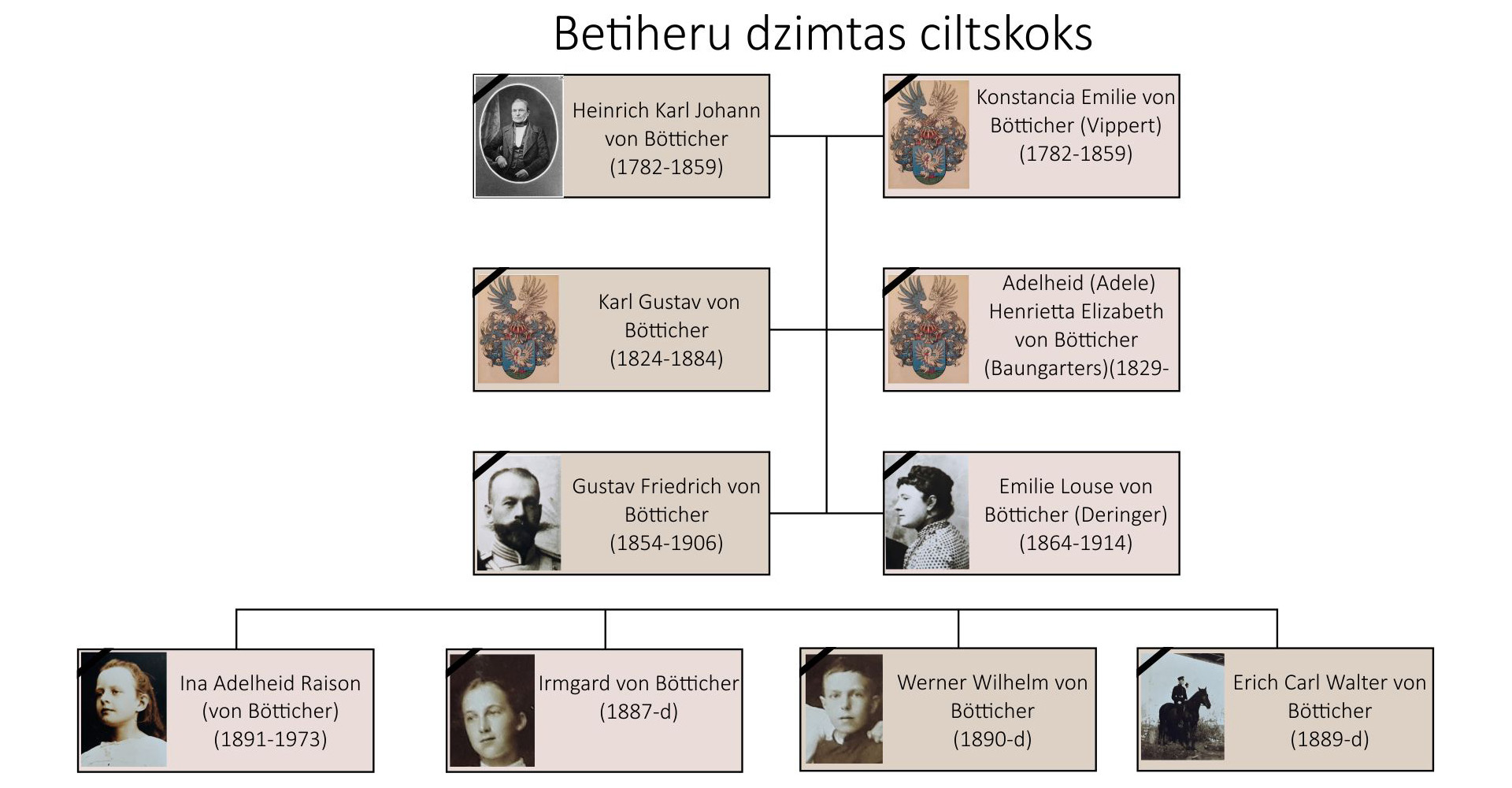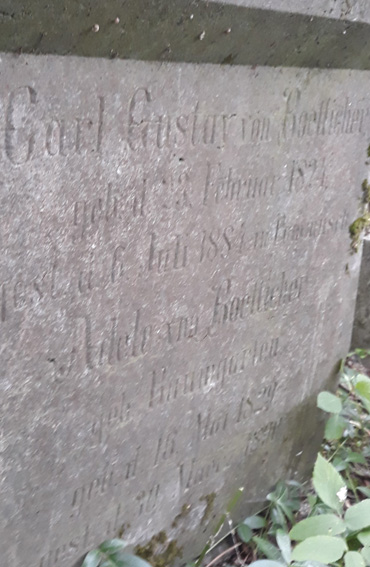The flourishing of Pamūša manor in the time o
On December 18, 1848 Marianna von Berner and Louise Catalano sold Pamūša manor together with Marianna's half-manor, Ārce manor was separated as a property in this deal, to the Mayor of Riga Heinrich Karl Johann von Bötticher as inherited Mortgage property. The sale amount of the manor was 89762 silver rubles, which indicates the increase in the value of the manor building and the whole farm. He, in turn, resold the manor on October 19, 1854 for 57,000 rubles to his son Karl Gustav von Bötticher. Four generations of Böttichers lived in and managed Pamūša manor. During this family reign most of the manor buildings and greenery were created. The manor house, at least in its external form, with a side extension, porch and veranda, dates back to the middle of the 19th century. The documents make it possible to trace the gradual construction of other buildings. As the Pamūša manor was still subject to the year 1796 gifting regulation about the right to receive building logs in the crown forest, the later owners did not hesitate to use it. In 1872, building logs were awarded for the construction of a new hay barn and ice cellar, in 1873 for the construction of a new brick barn next to the residential building, but in 1874 the cattle barn was repaired and new floors were laid in the manor house. At that time, the manor called Bötticher-Pommusch in the mouth of Latvian peasants became "Beķerpamūša", this name was still used in the first third of the 20th century. Karl Gustav von Bötticher died in 1884. Pamūša was inherited by his son Gustav Friedrich von Bötticher (1854-1906). The manor was well maintained. Many photographs of the Bötticher family give evidence of the cozy rhythm of life in Pamūša manor. The Bötticher family owned a significant number of properties in Latvia. 

Betiheri only established the family cemetery after the death of Karl Gustav von Betiher on July 6, 1884. In 1890, his wife Adele was laid next to him.
Only the foundations of the sandstone cross have survived, another monument perished after the World War I. There is also no fence around the graves, the road that once led to this place is overgrown.
.
